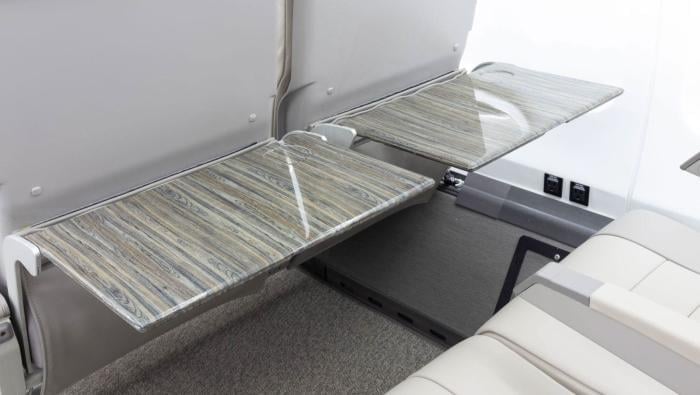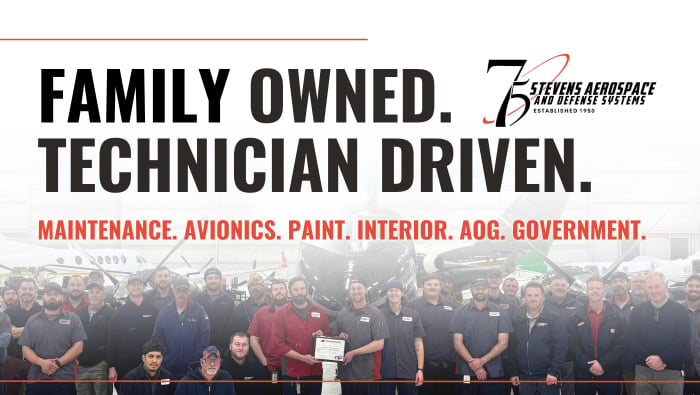|
Private flight provider Jet Out is doubling the size of its fleet with the addition of nine Cessna Citation CJ4 Gen 2s to the eight examples of the light jet it already operates. The Milwaukee, Wisconsin-based company took delivery of three CJ4 Gen2s in 2025 and is expecting three more before year-end, with another firm order for six scheduled for delivery next year. Announcing the expansion on Wednesday, Jet Out said that a pair of the Citations will operate from its recently-established base in the Dallas-Fort Worth area. This is part of a plan to add capacity to serve customers across the Upper Midwest, Southwest, North Central Texas, and South Florida through its co-ownership, co-lease, and charter programs. This week at NBAA-BACE 2025, Jet Out announced an initiative to collect real-time aircraft maintenance data for analysis. Its fleet is equipped with an aircraft recording system that captures more than 12,000 parameters at 80 samples per second, relaying data to maintenance teams every 30 minutes to accelerate diagnostics and parts orders. The company is also introducing its new MissionComplete program to assure customers that their trips will go ahead even if operational disruptions occur. This insurance package is being jointly offered with Charter Flight Support and Falcon MGA, which are part of the Aviation Innovation Holdings group, and covers all bookings, including empty leg flights. |
|
|
Apcela, the network systems developer that built and operated the air-to-ground airborne connectivity system created by SmartSky Networks, has relaunched the service and rebranded it as Apcela ATG. The move follows Apcela’s purchase of the ATG network from SmartSky earlier this year and enabled operators who installed SmartSky systems to switch their systems on again after the network abruptly shut down in August 2024. After years of delays, SmartSky launched the ATG service at the end of 2021 and into early 2022, eventually operating more than 300 ground stations in the U.S., providing full coverage in the continental U.S. and to about 100 miles offshore. Last October, Apcela announced an agreement to acquire the SmartSky network. After sorting through financial issues with creditors and investors, Apcela had to restore and upgrade the ground station network. “We had to visit all 300-plus sites, restore the power, restore the baseband units, and essentially restore and upgrade backhaul [capabilities],” Casey said. At the same time, Apcela added a software-defined wide-area network platform to improve performance and security. During the shutdown, Apcela kept the dozens of former customers who had original systems installed informed. They were excited, he said, and eventually became beta testers for the revamped ATG network, which relaunched not all at once but from east to west as ground stations came back online over the summer. |
|
|
Archer Aviation is acquiring about 300 patents from Lilium, an insolvent eVTOL aircraft manufacturer and former competitor, for €18 million ($21 million) after winning a competitive bid process, the California-based manufacturer announced yesterday. Lilium's insolvency administrator accepted Archer's bid in preference to another made by Europe-based Ambitious Air Mobility Group (AAMG), which has been trying to secure the assets for several months. According to Archer, the patents it obtained from the German company pertain to various electric aviation innovations, including electric motors and ducted fans, high-voltage systems, battery management, aircraft design, and flight controls. With this acquisition, Archer now claims to have more than 1,000 patent assets in its intellectual property portfolio. “Lilium’s pioneering work advanced the frontier of eVTOL design and technology, and we’re excited to bring their cutting-edge technologies into the fold at Archer as we advance our product roadmap,” said Archer CEO Adam Goldstein. In a written statement, AAMG complained that the insolvency administrator, Pluta, had breached a written commitment that Lilium's assets would go to the highest bidder. The company, which is a former prospective customer for Lilium's six-passenger eVTOL vehicle, said it had lodged a bid for €23 million and then increased it to €30 million. |
|
|
SEA Prime, which operates the business aviation infrastructure at Milan Linate and Malpensa airports, noted strong growth in activity for the first half of the year. The company reported 17,000 movements in the first six months, equating to a 3% improvement over the same period last year. The positive trend highlight’s Italy’s position as third largest business aviation market in Europe. The second half of 2025 was boosted by the city’s annual Fashion Week in September, a period in which Milan’s airports handled more than 1,000 business aircraft movements. “We are very proud of the results achieved so far and continue to look forward to future developments with enthusiasm, particularly to the expansion of the Linate Prime Terminal with 2,400 sq m dedicated to new lounges for welcoming passengers and crews,” said company CEO Chiara Dorigotti. “[That] will prepare us for the major events of 2026, including the much-awaited Winter Olympics.” |
|
|
Sponsor Content: C&L Aviation Group Hydrographics are transforming aircraft interiors with stunning woodgrain, modern carbon fiber, or bold custom designs. This cost-effective, durable process wraps cabinetry, tables, and more in seamless finishes that rival veneers, at lower cost and shorter downtime. Refresh your jet or brand a fleet with executive sophistication and personal style. |
|
|
The new Gulfstream Aerospace Texas Repair and Overhaul Center in the Dallas-Fort Worth area is officially open, adding more component repair and overhaul capabilities to the company’s service arm. Gulfstream’s three-year-old factory-owned service center is nearby at Fort Worth Alliance Airport (KAFW). Gulfstream spent $21 million to build the facility, which encompasses 100,000 sq ft and houses more than $5 million of dedicated parts and inventory for repairs. Activities at the center include wheels, brakes, batteries, hydraulics, structures, and composites. Plans call to add avionics, landing gear, and other components to the menu. “By expanding our in-house repair and overhaul capabilities, we’re expediting turnaround times and increasing parts availability to best support our customers’ needs while maximizing safety, quality, and efficiency,” said Gulfstream president Mark Burns. “We will continue to invest in component repair, maintenance support, and spare parts to enhance overall service for our customers, particularly as our fleet continues to grow.” Earlier this year, Gulfstream opened an expanded service center in Mesa, Arizona. “I believe this [year] to be the single most significant investment in customer support in the history of our company,” said Lor Izzard, senior v-p of customer support. |
|
|
Sesame Technologies returned to NBAA-BACE to highlight its engine cover technology that can be installed while standing on the ground through a specially designed pole. Sesame’s collapsible Diamond Engine Shield EX is designed with materials such as carbon fiber, high-temperature silicones, and a synthetic outer layer. Installed via the IP100-EX pole, the shield auto-centers on the leading edge of the engine with silicone cushion pads. The front bell mouth portion is designed with a white glow-in-the-dark silicone pad to enable the pilot or ground handler to see the engagement point for the pole during nighttime operations. To install, the person on the ground lifts the cover to the inlet via the pole. A rotation of the pole “auto indexes [the cover] on the leading edge and then arms pressurize against the inside of the nacelle. It’s a pinch force in a way,” explained Sam Jarvis, applications R&D engineer. Sesame has developed different-length poles to accommodate varying aircraft heights, and the fabric cover is available for aircraft such as those from Gulfstream, Bombardier, and Embraer, and the company is expanding applications, including legacy models. The product is a key safety tool, Jarvis said. “One, we keep pilots off ladders. We eliminate falls. We eliminate workers’ comp claims, and we also make it easy to protect the most valuable component, the engine,” Jarvis said. |
|
|
Travel management specialist MyFlight Advisor launched a scheduling service developed specifically for Part 91 flight departments. Under the program, the company is making its schedulers available to private aircraft operators on an as-needed basis. MyFlight Advisor, which is run by a team with extensive experience in private aviation, mainly provides scheduling, trip support, and operational oversight for corporations, wealthy individuals and family offices. Its new service is intended to apply its expertise to support flight departments during busy periods or when they are short-staffed due to vacations or medical leave. According to the company, tasks include updating aircraft and crew schedules, arranging logistics, and coordinating ground transportation, catering, and ground handling by coordinating with FBOs and other service providers. It will also monitor notams and weather conditions, as well as arranging international permits and customs arrangements, supported by multiple scheduling software platforms. “One thing that is often in short supply with flight departments is peace-of-mind,” said Jeffrey Reis, the Miami-based company’s founder and CEO. “Pilots should focus on flying—not chasing logistics, and schedulers need the resources to be informative, timely and nimble. With MyFlight Advisor, you gain a reliable scheduling partner who keeps the operation moving, safely and efficiently.” |
|
|
Leonard Michael Greene, the late Safe Flight Instrument Corp. founder and Corporate Angel Network (CAN) co-founder, and aviation pioneer Ross Perot Jr. are among a slate of individuals selected for the 2026 National Aviation Hall of Fame (NAHF), the organization announced this week at NBAA-BACE 2025. In all, seven individuals were selected in the 2026 class, also including famed pilot C.B. “Sully” Sullenberger; the late John Odegard, founder of the University of North Dakota’s School of Aerospace Science; the late William Bahret, known as the "father of stealth;" and pioneering astronauts Peggy Whitson, and Shannon Lucid. “These trailblazers have made groundbreaking contributions to aviation and aerospace, from breaking barriers and advancing safety standards to pioneering innovative technologies and inspiring future generations,” NAHF said. The NAHF will hold the induction ceremony on Sept. 24, 2026, in Washington, D.C They will join the 270 individuals who have been enshrined to date. Congressionally chartered, NAHF was founded in 1962 to recognize individual achievement in aviation and space exploration, celebrate pioneers who have shaped the industry, and inspire future generations. “We are honored to recognize the extraordinary achievements of the Class of 2026,” said NAHF president and CEO Aimee Maruyama. “From pioneering stealth technology and aerospace education to redefining human spaceflight and aviation safety, this year’s class reflects the full spectrum of innovation and leadership in aerospace.” |
|
|
As part of the complex process of engine development, GE Aerospace is running operational dust-ingestion tests to optimize for durability to ensure that its products can safely handle these conditions. In certain environments, dust is a critical factor and can hamper operations and engine life. These tests were done on earlier programs, as well as the Leap, and more recently on the Rise program’s high-pressure turbine airfoils. According to GE, “Dust-ingestion testing uses a proprietary mix of sand and other particles developed by GE Aerospace.” Ordinary sand and dust particles gathered from Middle East environments weren’t suitable for engine testing, according to a GE spokesman, which is why the company needed to develop its own proprietary particles. Once the particles are prepared, GE uses a specialized test rig to inject the dust into the engine during thousands of cycles of testing. This includes takeoff, climb, cruise, and landing. “The test campaign will replicate how the parts would withstand flight conditions in severe operating environments around the world, [which is] important for customer operations,” according to GE. In a YouTube video about Leap development, GE explained that, in the Middle East, “fine dust can block cooling holes in our high-pressure turbine blades, creating greater material stress when the engine runs hot. Turning on those conditions in a test cell turned out to be very, very difficult.” |
|
|
|
|
|
|
AINalerts News Tips/Feedback: News tips may be sent anonymously, but feedback must include name and contact info (we will withhold name on request). We reserve the right to edit correspondence for length, clarity, and grammar. Send feedback or news tips to AINalerts editor Chad Trautvetter. |
|
AINalerts is a publication of AIN Media Group, 214 Franklin Avenue, Midland Park, New Jersey. Copyright 2025. All rights reserved. Reproduction in whole or in part without permission is strictly prohibited. |

















